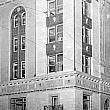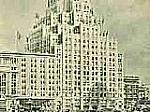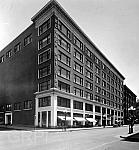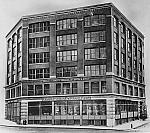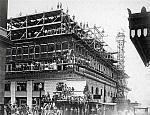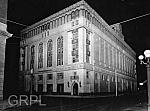Changes in the Grand Rapids Furniture Market
by Henry H. Masten
At one time a score or more southern manufacturers displayed lines in Grand Rapids, in fact, this market was the incubator of the growing industry. Included were the Bassett Furniture Co. of Bassett, Virginia, the Thomasville Furniture Co. of Thomasville, North Carolina, and the Drexel Furniture Co. of Drexel, North Carolina. The output of these three factories exceeded $150,000,000 a year, wholesale, in bedroom, living room, and library furniture, several times the amount now produced in the entire state of Michigan, including Grand Rapids.
While the furniture buyers came here in early days to visit the local factory showrooms, as the number of exhibitors increased, each with its own salesmen and following, the buyers increased in number as they could buy different grades in greater variety. At one time they outnumbered the local group more than three to one. The showings were diversified including lamps, bedding, even refrigerators.
This produced a serious housing situation, many buyers and salesmen going into private homes. Local capital financed the Pantlind, Morton, Rowe, and Browning hotels. They were profitable at the height of the market, but when the exhibitors withdrew the hotels noticed it keenly and all ran into financial difficulties. The Pantlind and Morton are still operating, the Rowe is no longer a hotel, and the Browning on Sheldon Ave. became a hospital.
When the market was at its peak, monthly trade journals were published here. The Furniture Record, Good Furniture, and the Furniture Manufacturer and Artisan had national circulation. During the markets, the White Printing Co. published the Daily Artisan Record, and the Grand Rapids Herald contained furniture pages supported by ads from the exhibitors.
Larger local furniture manufacturers showed only in factory showrooms and exhibition buildings were widely scattered. This was a hardship to the dealers and caused dissatisfaction on the part of the exhibitors because buyers had no time to make the rounds and business suffered. When the American Furniture Mart in Chicago was promoted by General Whiting, many outside concerns eagerly signed up as they, as well as the buyers, found it a great convenience to show and shop under one roof. All the larger local manufacturers now display their lines in Chicago and other large cities. High Point, North Caroline, the furniture center of the South, is now recognized as the largest case goods center.
The Grand Rapids Market meant much to the retail store and amusement places. The furniture photographers—James Bayne Co., and others became nationally known, specializing as they did on furniture photography. Grand Rapids had a large colony of furniture designers. There were many accessory factories making dowels, furniture hardware, mirror plate, etc. Several packing and storage concerns started in business by unpacking, placing and repacking samples after markets. These included Columbian Storage & Transfer Co., Blodgett Packing & Storage Co., and Elston-Richards Storage Co.
The loss of the furniture market to Chicago was both logical and inevitable. That city had the capital to erect large buildings to house the exhibits. The American Furniture Mart has 1.900,000 sq. ft. of space; the Merchandise Mar, 4,000,000—together over one hundred acres—representing an investment of around $100,000,000. They had diversified lines outside the industry to fill the buildings. Chicago had advantages that Grand Rapids lacked: accessibility—the largest railroad center—entertainment of all kinds, ample hotel capacity and attractions that can be found only in a metropolis.
In losing the furniture market, this city gained several fine buildings and hotels and prepared the way to present diversified industries. This no longer is a one industry town. The furniture factories, for competitive reasons, paid relatively low wages. The large employers today such a General Motors Co., American Motors Co., and Lear-Siegler Co. have skilled labor and pay top wages, contributing to the prosperity of the entire community. With easy access from highways and Urban Renewal well under way, the future growth of the city is well assured.

 facebook
facebook